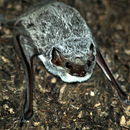en
names in breadcrumbs


The Mauritian tomb bat (Taphozous mauritianus)is native to central and southern Africa as well as Madagascar.Its range expands over grasslands, tropical and semi-arid habitats. It is by no means restricted to the inside of a dark, dingy tomb. They prefer the outer walls of tombs instead.
The dorsal side of these bats is mottled inappearance– consisting of brown, grey and white.The distinguishing feature for these little tykes is a completely white underbelly.The wing membranes are furless and brown.When the bat is not in flight, the wings will contract and stick to the sides of the body to allow the bat to crawl freely.
Mauritian tomb bats are primarilynocturnal foragers.Moths found near their roost are the favourite food item of these bats but they will supplement this staple with butterflies, termites and other insects.These bats use their vision to pick out potential prey species during the day then emit echolocation sounds to find prey at long range at night.
Mauritian tomb bats roost singly or in small groups ofup to 5 individuals.These groups usually consist of one sex.Females tend to roost in larger numbers but do not clump together like other bats.Instead, they prefer to roost with plenty space between individuals.Frequently used roosts become stained by secretions from the gular sac.
Mauritian tomb bats provide avaluable serviceto people – they keep insect populations low.Sometimes the insect populations are kept low enough to reduce the cases of malaria and insect bites.
TheIUCN Red Listclassifies Mauritian tomb bats as a species of Least Concern due to its wide distribution range and its tolerance for habitat modification.
For more information on MammalMAP, visit the MammalMAPvirtual museumorblog.